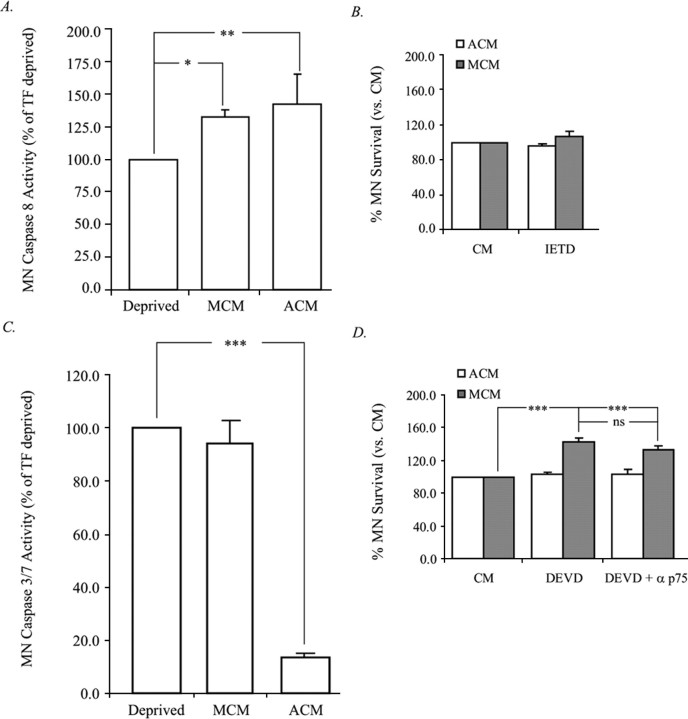Figure 3.
MCM and ACM treatment of acutely isolated MNs results in differential caspase activation and utilization. MNs were treated from plating with either ACM or MCM at 20 μg/ml and were assayed for caspase 8 (A) and caspase 3/7 (C) activity at 24 h. Additionally, MN viability was determined after inhibition of caspase 8 (B) and caspase 3/7 alone or in combination with anti-p75NTR (D). A, Treatment with both ACM and MCM resulted in the activation of caspase 8 relative to trophic factor-deprived condition. B, Treatment of MNs with 10 μm of the caspase 8 inhibitor, z-IETD-FMK (IETD), in the presence of ACM or MCM did not significantly affect viability. C, ACM significantly prevented the activation of caspase 3/7 observed after trophic factor deprivation, whereas MCM was unable to do so, despite rescuing a significant number of cells. At no time analyzed was the caspase 3/7 activity observed in MCM treated MNs significantly different from that observed in trophic factor-deprived cultures. D, ACM- or MCM-treated MNs were supplemented with the caspase 3/7 inhibitor z-DEVD-FMK alone or in the presence of anti-p75NTR, and viability was determined at 72 h. Data are expressed as a percentage of trophic factor-deprived condition (A, C) or as a percentage of control CM (B, D) (*p < 0.05, **p < 0.01, ***p < 0.001; ANOVA with Tukey–Kramer post hoc analysis; n = 5).

